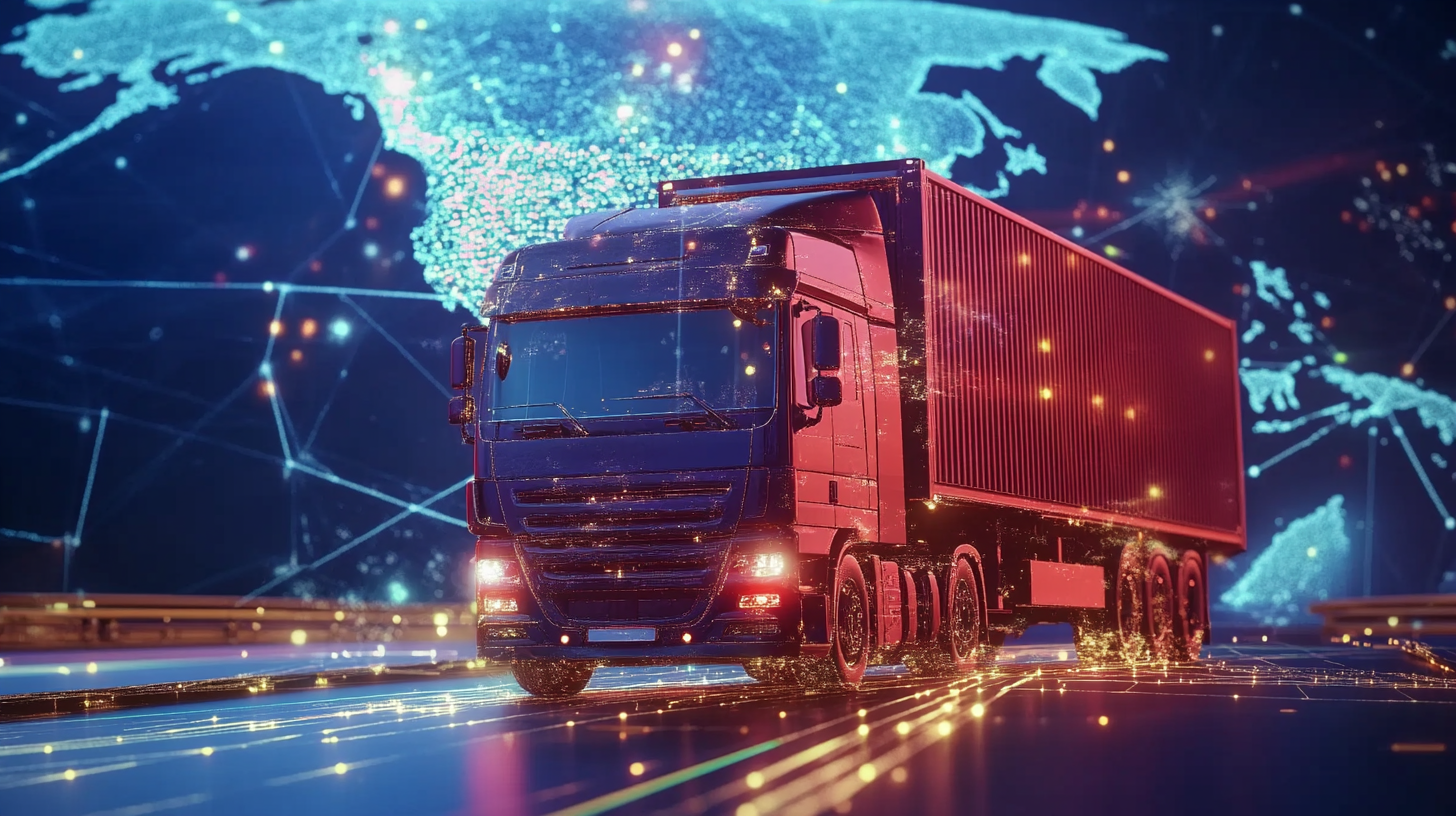Bus Transportation Options for Your Global Supply Chain Success
In today’s fast-paced global marketplace, efficiently managing your supply chain is crucial for success. As businesses expand their reach across borders, finding reliable and cost-effective transportation solutions becomes paramount. Among various modes of transport, bus transportation has emerged as an invaluable option for companies seeking to streamline their logistics. Offering flexibility and accessibility, bus transportation caters to both domestic and international shipping needs, enabling businesses to navigate complex supply chain networks with ease.
As professionals strive to maintain a competitive edge, integrating bus transportation into their supply chain strategy can lead to significant advantages. Not only does it facilitate timely deliveries, but it also helps reduce overall transportation costs. In this blog, we will explore the diverse bus transportation options available, their benefits, and how they can contribute to the success of your global supply chain. By understanding these alternatives, businesses can make informed decisions that enhance operational efficiency and foster growth in an increasingly interconnected world.

Understanding the Role of Bus Transportation in Global Supply Chains
In today's interconnected world, the role of bus transportation in global supply chains cannot be understated. As companies strive to optimize their logistics and ensure the timely delivery of goods, buses offer a flexible and cost-effective solution that bridges gaps in the transportation network. Unlike traditional freight methods, buses can navigate urban areas more easily, making them an ideal choice for last-mile delivery in densely populated regions.
Moreover, bus transportation contributes to sustainability efforts by reducing carbon footprints compared to larger freight vehicles. With a growing emphasis on eco-friendly practices in supply chain management, businesses are increasingly looking to integrate buses into their logistics strategies. These vehicles can help lower emissions while ensuring goods are transported efficiently, which aligns with global demands for greener practices.
Additionally, the adaptability of bus transportation is a significant asset. As market demands fluctuate, having the ability to quickly pivot and utilize diverse transportation options is crucial. Buses can accommodate varying cargo sizes and types, making them suitable for different industries, from retail to manufacturing. By recognizing the impact of bus transportation on global supply chains, businesses can enhance their operational efficiency, reduce costs, and better meet customer demands in an ever-evolving marketplace.

Key Benefits of Utilizing Bus Transport for Freight Efficiency
Utilizing bus transportation options is pivotal for enhancing freight efficiency in global supply chains. One of the key benefits of bus transport is its environmental impact; buses generally produce fewer emissions per ton-mile compared to trucks. According to the Federal Transit Administration, public transportation, including bus systems, can reduce CO2 emissions by over 45 million tons annually in the United States alone. This reduction is critical, especially in light of the World Health Organization's guidelines on ambient air quality, which emphasize the necessity of mitigating outdoor air pollution for public health.
Moreover, the integration of artificial intelligence in logistics and transportation can further optimize bus freight operations. AI-driven analytics can enhance route planning, ensuring that bus fleets operate at maximum efficiency while minimizing wait times and fuel consumption. A recent report noted that companies implementing AI in their transportation networks saw up to a 20% reduction in operating costs. These advancements not only contribute to economic benefits but also align with the growing need for sustainability in supply chains.
Innovation in transportation technologies, like electric and hybrid buses, is another significant aspect that can reshape freight logistics. Research indicates that electrifying bus fleets could lead to a 70% reduction in air pollutants compared to traditional diesel buses. As cities strive to implement cleaner transportation options, the transition to greener buses is crucial for meeting both regulatory standards and customer expectations for sustainability in supply chain management. Embracing these developments ensures that businesses can improve their freight efficiency while positively impacting the environment.
Bus Transportation Options for Your Global Supply Chain Success - Key Benefits of Utilizing Bus Transport for Freight Efficiency
| Transport Option | Key Benefits | Cost Efficiency | Flexibility | Sustainability |
|---|---|---|---|---|
| Local Bus Freight | Quick transit times, high availability | Low operational costs | Easily adjustable routes | Lower carbon footprint |
| Intercity Bus Transport | Efficient for medium distances | Competitive pricing | Adaptable to demand changes | Fuel-efficient compared to trucks |
| Bus Logistics Services | Integrated transport solutions | Reduced overall freight expenses | Customizable service options | Promotes eco-friendly practices |
| Chartered Bus Services | Dedicated trips for clients | Cost-effective for large volumes | Ability to meet specific timelines | Optimized for lower emissions |
Comparing Bus Transportation with Other Shipping Methods
When evaluating transportation methods for a global supply chain, bus transportation often emerges as a favorable option, particularly when compared to other shipping methods like air and rail. According to a report by the European Commission on Sustainable Mobility, bus transportation offers a lower carbon footprint, emitting an average of 62% less CO2 per ton-kilometer than air freight. This significant reduction in emissions makes buses an attractive choice for companies aiming to enhance sustainability in their logistics processes.
Cost is another crucial factor in this comparison. A study from the American Public Transportation Association indicates that bus transport typically costs about 30% less than air shipping for overland routes, especially in densely populated regions. This cost-effectiveness is particularly beneficial for companies looking to optimize their budgets while maintaining reliable delivery schedules. Moreover, the flexibility of bus routes enables businesses to reach remote areas that might be less accessible by rail or plane, thus widening their market reach.
While rail transportation is often lauded for its efficiency on long hauls, the Transit Cooperative Research Program highlights that buses can adapt quickly to fluctuating demand, addressing just-in-time delivery challenges that are becoming increasingly critical in today's fast-paced market. By integrating bus transportation into their logistics strategies, companies can achieve a balanced and responsive supply chain, catering effectively to the dynamic needs of their customers while minimizing costs and environmental impact.
Bus Transportation Options vs. Other Shipping Methods
This chart compares the transportation cost per 100 miles for various shipping methods including bus, rail, air, and sea. As illustrated, bus transportation offers a competitive rate compared to other methods, making it a viable option for global supply chain management.
Selecting the Right Bus Service Providers for Your Business Needs
When navigating the complexities of a global supply chain, selecting the right bus service providers is crucial for efficient operations. Businesses today are faced with multiple transportation options, and the right choice can significantly impact cost, reliability, and overall supply chain effectiveness. Understanding your specific business needs is the first step in identifying a bus service that aligns with your operational goals.
Evaluating potential bus service providers involves assessing their capabilities, coverage, and technology. Look for providers that offer comprehensive routes and timely schedules that match your shipment timelines. Additionally, consider their operational technologies, such as tracking systems that provide real-time updates on shipment status. This transparency is invaluable in managing supply chain fluctuating demands and enhancing customer satisfaction.
Finally, it's essential to evaluate the provider's reputation and reliability. Seek out testimonials and case studies from businesses in your industry. A provider with a proven track record of meeting deadlines and maintaining safety standards can serve as a key partner in your supply chain strategy. Ultimately, making an informed choice will not only streamline your logistics but also contribute to a more resilient and responsive global supply chain.
Bus Transportation Options for Your Global Supply Chain
This pie chart illustrates the various bus transportation options available for optimizing your global supply chain, showcasing the proportion of each type of service in the market.
Innovative Trends in Bus Transportation for Supply Chain Optimization
In the ever-evolving world of supply chain management, innovative trends in bus transportation are becoming increasingly crucial for optimizing logistics operations. With urbanization accelerating globally, the demand for efficient and sustainable transport solutions has never been greater. Artificial intelligence (AI) is at the forefront of this transformation, enabling smarter decision-making and operational efficiency. By integrating AI into bus transportation systems, supply chain managers can ensure timely deliveries, reduce operational costs, and enhance service reliability.
Furthermore, the recent development plans for modern comprehensive transportation systems highlight the government's commitment to improving logistics infrastructure. This initiative aims to foster an integrated transport network that supports various modes of transportation, including buses. Training programs focused on supply chain management within the bus sector are paving the way for professionals to leverage innovative strategies that align with current industry demands. By emphasizing collaboration and intelligent logistics solutions, businesses can navigate the complexities of modern supply chains more effectively.
As we advance into a new era of smart transportation, the adoption of electric buses and sustainable practices will play a pivotal role in shaping the logistics landscape. With a strong focus on sustainability, these innovations not only help reduce carbon footprints but also enhance the overall efficiency of supply chains. Embracing these trends will undoubtedly lead to improved performance and resilience in global supply chain operations.





